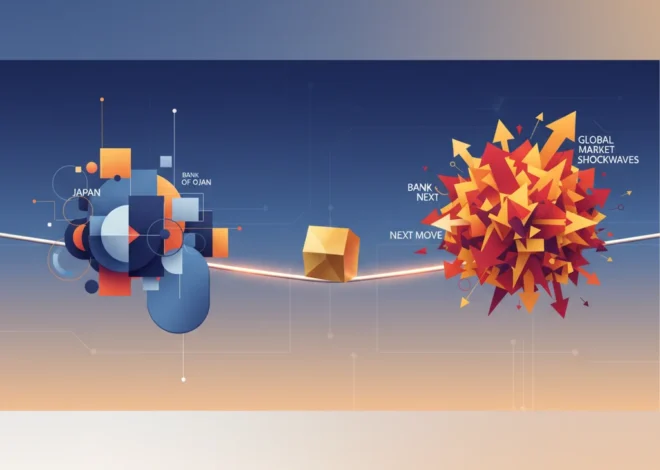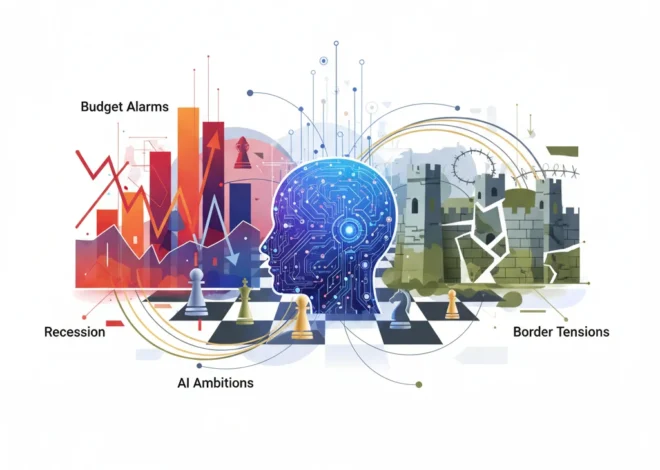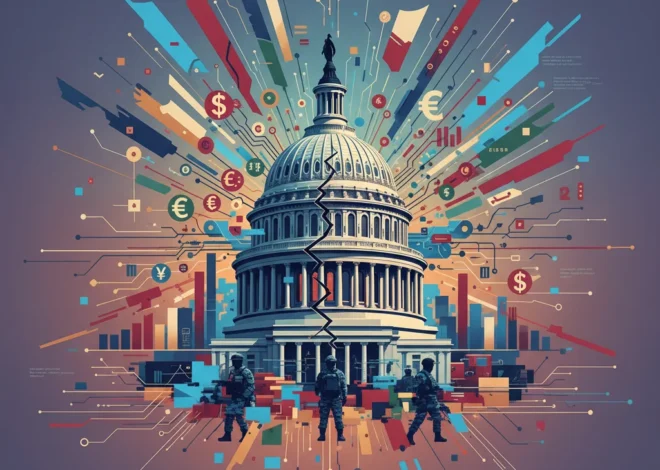
Beyond the Gaffe: How One Remark on NATO Could Reshape Global Finance
The Remark Heard Around the World
In the world of high-stakes global politics, words are never just words. They are instruments of power, signals of intent, and, sometimes, tremors that shake the very foundations of the global order. A recent comment by former President Donald Trump, highlighted in a letter to the Financial Times, has sent such tremors through the corridors of power and finance. At a campaign rally, Mr. Trump stated he would “encourage” Russia to do “whatever the hell they want” to any NATO member country not meeting its defense spending commitments. While dismissed by some as mere political rhetoric, this single statement represents a potential paradigm shift in U.S. foreign policy, imperiling the nation’s soft power and posing a significant, under-appreciated risk to the global economy, investment landscapes, and the intricate web of international finance.
This is not just a political “gaffe.” It’s a direct challenge to the 75-year-old security architecture that has underpinned global economic stability and prosperity since World War II. For investors, finance professionals, and business leaders, ignoring the profound economic implications of this rhetoric would be a critical miscalculation. The stability of the stock market, the predictability of global trade, and the very dominance of the U.S. dollar are all intertwined with the security alliances Mr. Trump has called into question.
The Economic Value of a Handshake: Deconstructing Soft Power and Alliances
To understand the financial fallout, we must first appreciate what’s at stake: the immense, often invisible, economic value of American soft power. Coined by political scientist Joseph Nye, soft power is the ability to attract and co-opt rather than coerce. In economic terms, it translates to trust, predictability, and confidence—the essential lubricants of the global financial machine.
The NATO alliance is arguably the most potent symbol of this power. The commitment to collective defense under Article 5—the principle that an attack on one member is an attack on all—has created a security umbrella under which Western economies have flourished. This security guarantee dramatically lowers the geopolitical risk premium for capital flowing between member nations. It means businesses can build cross-border supply chains, and investors can allocate capital with a high degree of confidence that state-level conflicts will not arbitrarily destroy their assets. A report from the Atlantic Council emphasizes that the costs of upholding these alliances are minuscule compared to the costs of major power conflicts, which these alliances are designed to prevent.
Undermining this commitment introduces a level of uncertainty not seen in decades. If the U.S. commitment is no longer ironclad, every cross-border contract, investment, and supply chain in Europe suddenly carries a higher risk. This uncertainty doesn’t just stay in Europe; it ripples through the entire global banking and investment system, forcing a fundamental repricing of risk assets worldwide.
The EU's Innovation Paradox: Is Regulation Strangling the Future of Finance?
The NATO Spending Debate: A Look at the Numbers
At the heart of the controversy is the NATO guideline that member countries should spend at least 2% of their GDP on defense. This target was agreed upon in 2014, following Russia’s annexation of Crimea, as a goal to be met by 2024. While progress has been made, not all members have reached this threshold, creating a point of political friction.
Below is a snapshot of estimated defense expenditures for NATO countries in 2023, which provides context for the ongoing debate.
| Country | Defense Expenditure as % of GDP (2023 Estimate) |
|---|---|
| Poland | 3.90% |
| United States | 3.49% |
| Greece | 3.01% |
| Estonia | 2.73% |
| Lithuania | 2.54% |
| United Kingdom | 2.07% |
| Latvia | 2.07% |
| Germany | 1.57% |
| France | 1.90% |
| Italy | 1.46% |
| Canada | 1.38% |
| Spain | 1.26% |
Source: Data adapted from NATO’s official 2023 estimates. This table shows a selection of countries for illustrative purposes.
While the numbers highlight disparities, the suggestion of abandoning allies over spending targets fundamentally misunderstands the nature of the alliance. It is not a transactional protection service; it is a strategic pact designed for mutual security and stability, the economic benefits of which far outweigh the direct military costs for all members, including the United States.
From Geopolitics to Your Portfolio: The Ripple Effect on Markets
A questioning of U.S. security guarantees would unleash a tidal wave of consequences across the financial world, impacting everything from currency markets to corporate earnings.
1. The Dollar’s Dominance at Risk
The U.S. dollar’s status as the world’s primary reserve currency is not an accident. It is built on the foundation of the United States’ economic might, deep and liquid capital markets, and, crucially, its role as the ultimate guarantor of global security. Nations hold dollars because they trust the stability and power of the U.S. If that trust erodes, central banks may accelerate their diversification away from the dollar, a trend already underway in some quarters. A significant decline in the dollar’s reserve status would have severe consequences for the U.S. economy, potentially leading to higher borrowing costs and inflation.
2. Volatility in the Stock Market
Markets despise uncertainty. The mere suggestion of a fractured NATO sends a jolt of volatility through the system. Sectors would be impacted unevenly. Defense contractors might see a surge in orders from newly anxious European nations. However, multinational corporations with complex global supply chains would face immense disruption. Increased geopolitical tension often leads to a “flight to safety,” where investors dump riskier assets like stocks in favor of government bonds or gold. As history shows, geopolitical shocks, from the oil crisis of the 1970s to the invasion of Ukraine in 2022, are consistently followed by periods of intense market turmoil (source).
The £100 Billion Question: Are Banks Prioritizing Payouts Over Progress?
3. Rethinking Global Trade and Fintech
A world with weakened alliances is a world with more trade barriers, more sanctions, and more economic fragmentation. The seamless flow of goods, services, and data that has defined the era of globalization would be threatened. This would force a costly re-engineering of supply chains, fueling inflation. In this environment, the world of financial technology would also face a reckoning. While a fragmented system might create niches for innovative fintech solutions designed to navigate disparate regulatory regimes, it would also destroy the network effects that have allowed payment and trading platforms to scale globally. The dream of a frictionless global financial system would be replaced by a balkanized digital landscape.
Conclusion: A Wake-Up Call for Investors and Leaders
The casual remark made at a political rally, and rightly flagged by observers like Shylton Matta, is far more than a diplomatic faux pas. It is a direct challenge to the post-war liberal international order—an order that, for all its flaws, has delivered unprecedented levels of global prosperity and stability. The soft power derived from alliances like NATO is one of America’s greatest economic assets, providing a stable canvas on which global commerce is painted.
For those in the world of finance, economics, and investing, this is a critical moment. The foundational assumptions that have guided strategy for decades are being openly questioned. Building geopolitical risk analysis into every investment thesis is no longer a niche specialty but an absolute necessity. The cost of a fractured global security alliance would not be measured in defense budgets alone, but in trillions of dollars of lost economic value, market capitalization, and global prosperity. The gaffe is not just about words; it’s about the potential unraveling of a world order, and the price of that unraveling would be paid by us all.
Beyond the Hype: 3 Critical Truths Shaping the Future of Finance


